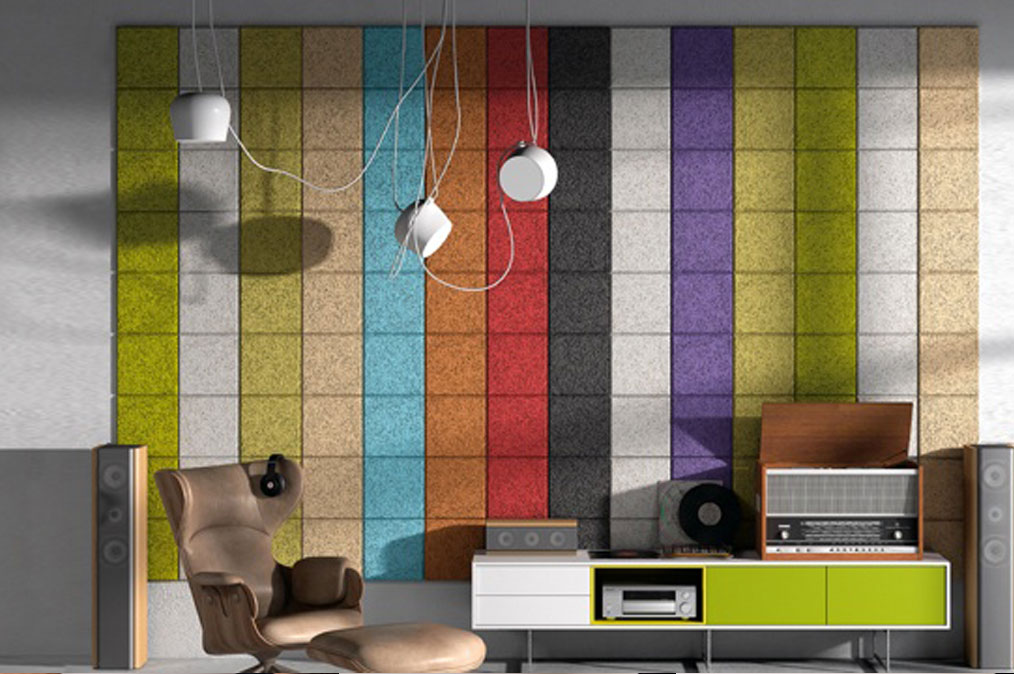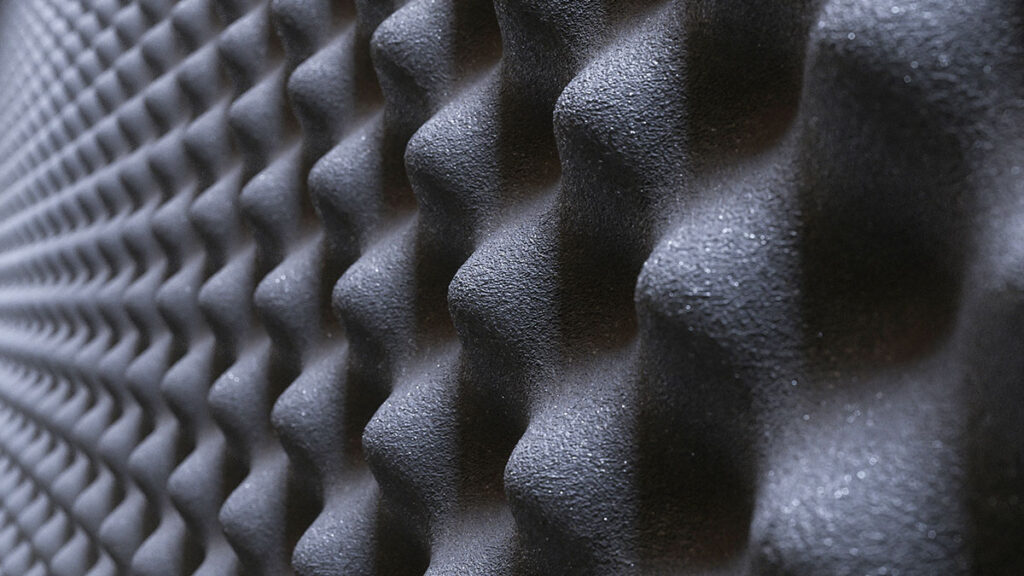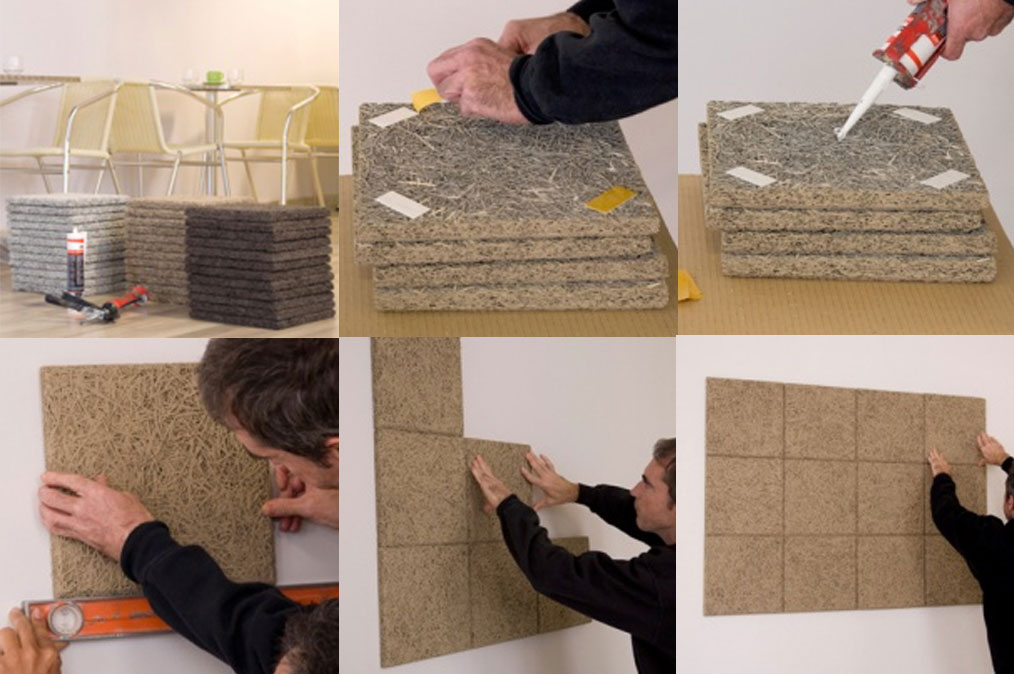Create quiet and comfortable environments using acoustical panels
If you are looking to create quiet, comfortable environments in your home or office, the acoustic panels can be the perfect solution. Acoustic panels are elements specially designed to reduce noise levels in a space, providing a quieter and more pleasant environment.
Acoustic panels are very versatile and can be used in a wide variety of spaces, such as living rooms, bedrooms, recording studios, offices, among others. By installing acoustic panels, you can enjoy a much clearer and crisper listening experience, and also reduce outside noise, allowing you to work, study or rest without interruptions.

If you are looking to create quiet and comfortable environments in your home or office, acoustical panels are an excellent choice. With their ability to reduce noise and improve sound quality, acoustic panels can transform any space into a more pleasant and welcoming place. Feel free to stay to see all the information about them.
Types of acoustic panels
There are several types of acoustical panels available on the market, including rock wool panels, acoustic foam panels, and legnomuro panels. Each type has its own characteristics and advantages, so it is important to choose the right type of panel for your specific space and needs.
Rock wool or polyester wool acoustic panels
Rock wool acoustic panels or also known as polyester wool are a great option to reduce noise in any space. These panels are made of rock wool fibers, a material characterized by its excellent acoustic absorption capacity and fire resistance.
Rockwool acoustic panels can be used in a wide variety of spaces, such as recording studios, conference rooms, restaurants, libraries, among others. These panels are very effective in reducing noise levels and improving sound quality in the space.

In addition to their acoustic capabilities, rock wool acoustic panels also offer other benefits. For example, they are highly fire resistant, making them ideal for public spaces where safety is a priority. They are also very durable and moisture resistant, making them an excellent choice for wet spaces such as bathrooms or kitchens.
Acoustic foam panels
If you are looking to reduce noise in a space, acoustic foam panels may be the solution you need. These panels are made of high-density foam, which allows them to absorb sound and reduce echo in a space, resulting in quieter and more comfortable environments.
Foam acoustic panels are very versatile and can be used in many different types of spaces, from recording studios and rehearsal rooms to offices and homes. In addition to improving sound quality, these panels are also very lightweight and easy to install, making them a practical and economical solution for anyone looking to reduce noise in a space.
It is important to note that the quality of acoustic foam panels can vary, so it is advisable to choose a reliable supplier and have professionals help you with the installation. In this way, you can ensure that the panels have a good durability and maintain their acoustic capacity for a long time.

legnomuro acoustic panels
Legnomuro acoustic panels are made of high quality wood and can be customized in terms of size, shape, color and pattern to suit any environment. These panels are designed to be aesthetically appealing and bring a warm, natural feel to interior spaces.
Legnomuro acoustic panels offer excellent sound absorption capacity thanks to their high-density acoustic foam core , which is located behind the wooden slats. This core is designed to absorb sound and reduce reverberation, which significantly improves sound quality in different types of spaces.
In addition, Legnomuro acoustic panels are fire resistant and designed to comply with safety regulations. These panels are also moisture resistant and can be used in spaces with challenging environmental conditions.
How to install the acoustic panels step by step
- Check the number of acoustical panels you will need: To find out how many panels you need, measure the total surface area you want to cover with acoustical panels and calculate the amount needed based on the size of the panels you plan to use.
- Acquire the necessary materials: Make sure you have all the necessary materials for the installation of the acoustic panels. These include the panels themselves, special adhesives for fastening, cutting tools, pencils, level, tape measure, among others.
- Decide the location of the panels: Before starting the installation, it is important to decide the exact location of the acoustic panels. To do this, it is necessary to identify the areas with the highest reverberation and where the most noise is produced. In general, it is recommended to cover as much of the walls and ceilings of the space as possible.
- Clean the surface: Before applying the adhesive, be sure to properly clean the surface where the acoustic panels will be installed, removing any impurities or residue.
- Cut the panels to size: Once you have the location and surface prepared, cut the panels to the size you need with the appropriate tools.
- Apply the adhesive: Apply the special adhesive for acoustic panels to the back of the panel, spreading it evenly. Then press the panel firmly on the previously cleaned surface and hold the pressure for a few seconds to ensure a good fixation.
- Adjust the position: Once you have fixed the panel, adjust its position if necessary and make sure it is level with the rest of the panels.
- Repeat the process: Continue repeating the process of fixing acoustic panels on the surface, making sure that all panels are placed in the correct and level position.
- Finish: For a perfect finish, be sure to cover any gaps between the panels with a special sealant. In addition, you can add moldings or frames to decorate the panels.

Surface preparation for sound insulation installation
For a correct installation of the insulation it is important to prepare the surface of the wall or ceiling where it will be placed.
First of all, it is necessary to make sure that the surface is clean and dry, without traces of dust, grease or moisture. If moisture is detected, it is necessary to solve the problem before installing the panels.
Once the surface is clean and dry, the guide lines for panel placement should be marked. This can be done by measuring and marking the position of each panel on the wall or ceiling, making sure they are level.
Special adhesives can also be used for the installation of acoustic panels. In this case, it is essential to follow the adhesive manufacturer’s instructions and apply an adequate amount to the surface.
Acoustic panels contribute to privacy
Privacy is a critical issue in many spaces, from offices and meeting rooms to bedrooms and recording studios. However, achieving a private environment can be a challenge in environments where there is a lot of noise or where the space is shared with other people.
This is where soundproofing walls can be a great solution. This insulation is designed to absorb sound and reduce reverberation, which means they can help create a quieter, more private environment.
For example, in an open-plan office, the panels can reduce sound propagation between the different workspaces. In this way, workers can have more privacy and concentrate better on their tasks.
In a bedroom or recording studio, acoustic panels can reduce external noise, such as traffic or voices from the street. This allows people to rest better or record music and voice with higher quality.
In addition, acoustical insulation can be a good option for shared spaces, such as waiting rooms or libraries. By reducing noise, acoustic panels can create a quieter, more private environment for the people using the space.
Benefits of acoustic panels
- Noise reduction: the main benefit of acoustic panels is the reduction of noise in the environment where they are installed. These panels are designed to absorb sound and reduce reverberation, which means they can create a quieter and more comfortable environment.
- Improved sound quality: In addition to reducing noise, acoustic panels can also improve the sound quality in an environment. By reducing reverberation, the panels can help make the sound clearer and more defined.
- Increased privacy: Acoustical panels can help increase privacy in different spaces. By reducing sound propagation, the panels can create a more private and quiet environment for the people in the space.
- Improved work performance: In workspaces, acoustic panels can improve workers’ work performance. By reducing noise, the panels can help workers concentrate better on their tasks and increase their productivity.
- Stress reduction: noisy environments can be stressful for people. Acoustic panels can reduce noise and therefore reduce stress on the people in the environment.
- Customization of the environment: acoustic panels come in a wide variety of designs and colors, which means that they can customize the environment in which they are installed. This can be especially useful in spaces where you want to produce a certain image or generate a certain atmosphere.
Acoustical panels are an increasingly popular solution in interior design and an excellent choice for improving the user experience and acoustic performance of any space.
In addition, from Paratureforma we recommend that if you liked this publication take a look at how to soundproof windows in 4 steps

